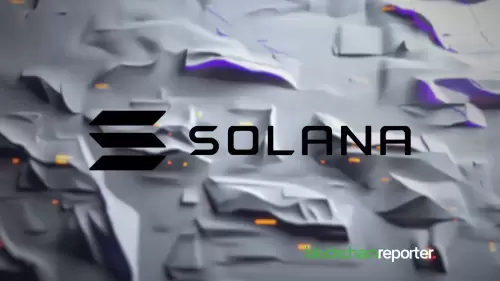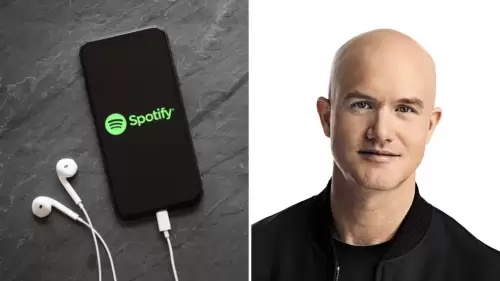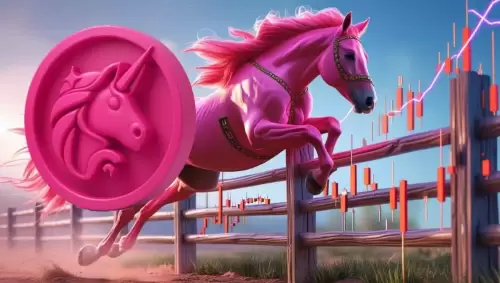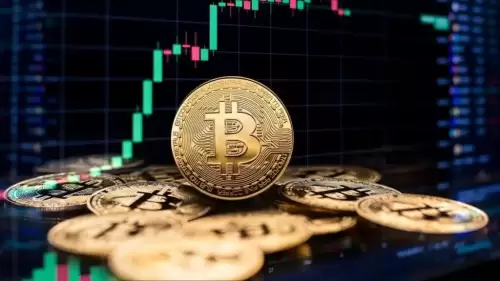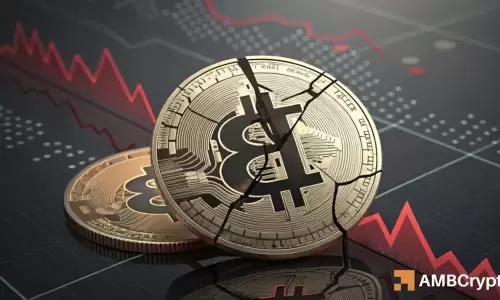 |
|
 |
|
 |
|
 |
|
 |
|
 |
|
 |
|
 |
|
 |
|
 |
|
 |
|
 |
|
 |
|
 |
|
 |
|
Cryptocurrency News Articles
HydraDAO claims its researchers were able to use a novel technique to repair severed spines in rats
May 06, 2025 at 07:25 pm
In a May 5 X post, decentralized science (DeSci) project HydraDAO said that one of its research projects resulted in “rats who had their spines fully transected” being able to walk again.
Decentralized autonomous organization HydraDAO claims that its researchers were able to use a novel technique to repair severed spines in rats.
Decentralized science (DeSci) project HydraDAO said that one of its research projects resulted in rats who had their spines fully transected being able to walk again. More notably, recovery from surgery took five days.
The project in question is the Dowell spinal fusogens project led by Michael Lebenstein-Gumovski, which had 380,700 USDC donated to it. The dedicated HydraDAO page describes it as follows:
A team of neuroscientists led by Dr. Michael Lebenstein-Gumovski developed a unique technology for fusing spinal cord tissue after complete transection. The project is named after the famous neurosurgeon Dr. Charles Dowell, a pioneer in spinal cord injury research.
A team of neuroscientists led by Dr. Michael Lebenstein-Gumovski developed a unique technology for fusing spinal cord tissue after complete transection. The project is named after the famous neurosurgeon Dr. Charles Dowell, a pioneer in spinal cord injury research.
The technology is based on a special compound called PEG-chitosan, which is a derivative of polyethylene glycol (PEG) and chitosan, a biopolymer found in crustacean shells. This compound has been studied for its ability to fuse cell membranes, which is crucial for repairing severed nerve fibers.
The technology is based on a special compound called PEG-chitosan, which is a derivative of polyethylene glycol (PEG) and chitosan, a biopolymer found in crustacean shells. This compound has been studied for its ability to fuse cell membranes, which is crucial for repairing severed nerve fibers.
The researchers also developed a method for rapidly solidifying the PEG-chitosan compound using light, which allows them to create a strong scaffolding that can hold the spinal cord together as it heals.
The researchers also developed a method for rapidly solidifying the PEG-chitosan compound using light, which allows them to create a strong scaffolding that can hold the spinal cord together as it heals.
In addition, they used several neuroprotection techniques, such as local hypothermia and cellular death inhibitors, to minimize damage to the nerve tissue during surgery.
In addition, they used several neuroprotection techniques, such as local hypothermia and cellular death inhibitors, to minimize damage to the nerve tissue during surgery.
The results of the research are promising. Pigs that had their spines completely severed and were treated with the technology developed by Dr. Lebenstein-Gumovski's team recovered mobility within two months. The researchers are now working to further develop the technology and hope to begin human testing soon.
The results of the research are promising. Pigs that had their spines completely severed and were treated with the technology developed by Dr. Lebenstein-Gumovski's team recovered mobility within two months. The researchers are now working to further develop the technology and hope to begin human testing soon.
Fusogens are chemicals capable of fusing cell membranes and have long been researched as a means to reconnect severed nerve fibers. One such chemical is polyethylene glycol (PEG), which was shown to promote membrane fusion and seal axonal membranes in other research.
Lebenstein-Gumovski's team adds a biopolymer from crustacean shells called chitosan, resulting in a PEG-chitosan compound dubbed neuro-PEG. This compound is also photopolymerizable, meaning it can be rapidly solidified using light.
This presumably allows for creating a solid scaffolding that can weld the spinal cord more permanently than liquid PEG-based solutions. Dowell also implements neuroprotection techniques such as localized hypothermia and cellular death inhibitors to prevent further damage to nerve tissue.
This presumably allows for creating a solid scaffolding that can weld the spinal cord more permanently than liquid PEG-based solutions. Dowell also implements neuroprotection techniques such as localized hypothermia and cellular death inhibitors to prevent further damage to nerve tissue.
A 2023 research paper by Gumovski published in the peer-reviewed scientific journal Surgical Neurology International claimed that pigs treated with the compound recovered mobility in two months. The study’s conclusion reads:
The results of this study demonstrate that it is possible to achieve functional recovery after complete spinal cord transection in pigs using a novel technology developed by our team. This technology includes a PEG-chitosan compound for fusing spinal cord tissue, a method for rapidly solidifying the compound using light, and several neuroprotection techniques.
The results of this study demonstrate that it is possible to achieve functional recovery after complete spinal cord transection in pigs using a novel technology developed by our team. This technology includes a PEG-chitosan compound for fusing spinal cord tissue, a method for rapidly solidifying the compound using light, and several neuroprotection techniques.
The pigs in our study showed signs of recovery within two months of surgery, and by the end of the study period, they had regained significant mobility in their hind limbs. We are now working to further develop this technology for potential use in humans.
The pigs in our study showed signs of recovery within two months of surgery, and by the end of the study period, they had regained significant mobility in their hind limbs. We are now working to further develop this technology for potential use in humans.
The HydraDAO proposal suggests that "revenue streams include specialized surgical kits priced between $3,500 and $20,000, depending on the market and region." Furthermore, the team would also provide "comprehensive training and certification for neurosurgeons and emergency medical services" personnel.
Gumovski is a neurosurgery researcher based in Russia (Stavropol State Medical University and affiliated institutes). He was a member of Sergio Canavero’s research head-transplant project, cited in at least one relevant paper.
Those articles were also published in Surgical Neurology International, while most top scientific publications shied away from the subject. The neurosurgeon from Turin, Italy, claimed to have performed a successful head transplant on a monkey back in 2016.
The team also experimented on human cadavers in preparation for a 2017 live human head transplant, which never took place. Neuroscientist Dean Burnett said at the time that head transplantation presented insurmountable challenges and that Canavero had “offered no feasible explanation or science for his claims to be able to overcome these hurdles.”
While the Dowell team’s project builds on established research and should not be dismissed outrighthttps://decrypt.dev/assets/images/logos/crypto-logo.svg, it is hard not to notice the similarity in making public claims not unlike those that characterized Canavero’s career.
While the Dowell team’s project builds on established research and should not be dismissed outrighthttps://decrypt.dev/assets/images/logos/crypto-logo.svg, it is hard not to notice the similarity in making public claims not unlike those that characterized Canavero’s career.
Moreover, fusogens are well studied and less dramatic but similar results have been reported by other teams in the past (2019 example from the University of Texas).
The evidence provided is promising, but it is advisable to exercise caution, especially until multiple third-party teams independently reproduce the results.
HydraDAO
Hydropower
Disclaimer:info@kdj.com
The information provided is not trading advice. kdj.com does not assume any responsibility for any investments made based on the information provided in this article. Cryptocurrencies are highly volatile and it is highly recommended that you invest with caution after thorough research!
If you believe that the content used on this website infringes your copyright, please contact us immediately (info@kdj.com) and we will delete it promptly.

























































